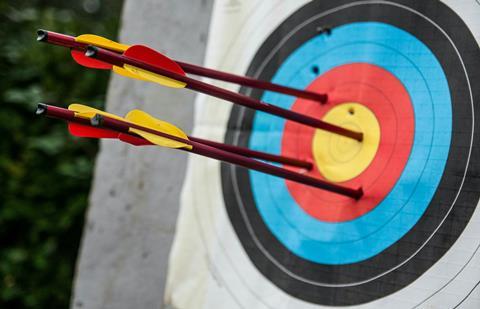Catherine Smith suggests classroom activities that introduce students to accuracy and systematic error in measurement

Practical work and the key terms students need to understand and apply are once again at the forefront of teachers’ attention with the GCSE and A-level reforms in England. Over the last few weeks teachers have been directing students to the subject specific vocabulary lists produced by awarding bodies, and asking them to practise applying these terms to a range of practical scenarios in preparation for their imminent exams.
As the exam season draws to a close, now is an excellent time to review schemes of learning to ensure the correct uses of terms, like accuracy, precision and error in measurement, are embedded into practical work from an early age.
Choose the right equipment
Scientists judge the accuracy of a measurement by how close the measurement is to the true value. It depends on two things:
- The skill of the scientist at taking the measurements
- The quality of the measuring apparatus
To introduce the accuracy of a measurement to any age group, ask students to use a range of apparatus available to them in the laboratory to measure out 25.0 cm3 of water into a beaker. By comparing the mass of water measured to the true value (calculated using the density of water), students can identify the most accurate piece of equipment to use. Download student worksheets for this activity and teacher notes from How to teach hazards, safety and apparatus.
This can be modified for any age group by varying the complexity of equipment available (beaker, measuring cylinder, burette, pipette). Older students can also take into consideration the fact the density of water varies slightly with temperature.
Quantify accuracy
The percentage difference between the measured value and the true value quantitatively shows the accuracy of a measurement.
You can incorporate these calculations into any investigation where you know the true value. This might include a titration to determine the concentration of an unknown acid (where you know the true value) or experiments to determine the molar volume of gas, or the enthalpy of combustion of a specific fuel.
A nice opportunity to introduce the quantitative measurement of a value’s accuracy at a young age is when investigating the thermal decomposition of copper carbonate. Ask students to use their experimental skills to determine the mass of carbon dioxide produced when they heat a known mass of copper carbonate. They can then calculate the percentage difference between their value and the true value that you calculate. Depending on the ability of the class, you can extend students’ understanding by asking them to explain any differences, and to suggest ways to improve the accuracy of the result if they were to repeat the experiment again. Challenge students to be specific in their answers – they must explain why their value was higher or lower than the true value.
Consider systematic errors
There are many things that can go wrong in an experiment. These are often described as errors.
A systematic error is one which causes the measurement to be wrong by the same amount each time. If this error is caused by equipment that isn’t zeroed properly it is called a zero error. Systematic errors reduce the accuracy of a measurement.

Card sort
Download this card sort activity (MS Word or pdf) that probes students’ understanding of systematic errors and encourages them to consider what might cause them, and how they could be eliminated.
Include the technicians
Some systematic errors can be reduced by calibrating the equipment before use. A good example of where this is routinely carried out is when using pH probes. Technicians often calibrate equipment before sending it to the classroom. If it is not possible for students to calibrate the equipment themselves, ask your technicians to demonstrate the process before starting the practical.
One final word of warning
There is still some confusion around the use of the terms accurate and precise. A result or measurement is accurate if it is close to the true value. A precise result is one where the data points are close together (but there can be a random error). It is therefore possible to have a precise measurement that is not accurate. You can illustrate the difference using a target where the centre of the target represents the true value.

Precision vs accuracy - poster
Download this poster that shows the difference between accuracy and precision using pictures of holes on a target (MS Word or pdf).
Further resources to embed students’ understanding of accuracy in measurements are available on Learn Chemistry in the resource The nature of science: measurement, accuracy and precision.
Downloads
Card sort
Word, Size 52.39 kbCard sort
PDF, Size 45.38 kbPrecision vs accuracy: poster
Word, Size 0.13 mbPrecision vs accuracy: poster
PDF, Size 0.11 mb















1 Reader's comment